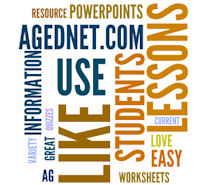|
Common Core Standards for Language
General information:
Common Core State Standards for Language are divided into six anchor standards. There is no technical version for this section.
Language anchor standards:
Conventions of Standard English:
1. Demonstrate command of the conventions of standard English grammar and usage when writing or speaking. SEE EXAMPLE.
2. Demonstrate command of the conventions of standard English capitalization, punctuation, and spelling when writing. SEE EXAMPLE.
Knowledge of Language:
3. Apply knowledge of language to understand how language functions in different contexts, to make effective choices for meaning or style, and to comprehend more fully when reading or listening. SEE EXAMPLE.
Vocabulary Acquisition and Use:
4. Determine or clarify the meaning of unknown and multiple-meaning words and phrases by using context clues, analyzing meaningful word parts, and consulting general and specialized reference materials, as appropriate. SEE EXAMPLE.
5. Demonstrate understanding of figurative language, word relationships, and nuances in word meanings. SEE EXAMPLE.
6. Acquire and use accurately a range of general academic and domain-specific words and phrases sufficient for reading, writing, speaking, and listening at the college and career readiness level; demonstrate independence in gathering vocabulary knowledge when encountering an unknown term important to comprehension or expression. SEE EXAMPLE.
Examples of using AgEdNet.com to meet language standards:
| Language Anchor Standard 1. Demonstrate command of the conventions of standard English grammar and usage when writing or speaking. |
|---|
| AgEdNet.com Resources: | LS133 The Power of Polished Presentations
PowerPoint for LS133
Exercises for LS133 |
|---|
| Applying the standard: | This lesson focuses on how the "mechanics" of communication affect the effectiveness of our presentations.
Exercise 1 directs students to view a PowerPoint with problems and then identify "bad" examples of verbal and written communication.
Exercise 2 is a group exercise asking students to identify communication problems with online chats, instant messaging, email and texting.
Exercise 3 asks students to identify and share one real-life communication problem they have experienced. |
|---|
 Back to top Back to top
| Language Anchor Standard 2. Demonstrate command of the conventions of standard English capitalization, punctuation, and spelling when writing. |
|---|
| AgEdNet.com Resources: | LS121 Writing a Press Release
PowerPoint for LS121
Exercise 3 for LS121 |
|---|
| Applying the standard: | This lesson discusses how to prepare a press release, including the importance of correctly using style, spelling, punctuation and grammar.
The PowerPoint reviews main lesson ideas.
Exercise 3 assigns the task of preparing a press release. |
|---|
 Back to top Back to top
| Language Anchor Standard 3. Apply knowledge of language to understand how language functions in different contexts, to make effective choices for meaning or style, and to comprehend more fully when reading or listening. |
|---|
| AgEdNet.com Resources: | LS108 Learning to Speak and Write Effectively
PowerPoint for LS108
Exercises for LS108 |
|---|
| Applying the standard: | The topic of this lesson is how effective speaking and writing in a variety of contexts can help someone become a better leader.
The PowerPoint reviews main lesson points.
Students practice communicating by speaking and through writing in the exercises for this lesson. |
|---|
 Back to top Back to top
| Language Anchor Standard 4. Determine or clarify the meaning of unknown and multiple-meaning words and phrases by using context clues, analyzing meaningful word parts, and consulting general and specialized reference materials, as appropriate. |
|---|
| AgEdNet.com Resources: | Glossary of Large Animal Science Terms (glossary for the Large Animal Science Library)
Large Animal Science Library (view vocabulary puzzles for this library  ) )
|
|---|
| Applying the standard: |
All AgEdNet.com libraries include a strong focus on using and explaining subject-related vocabulary. Technical words are defined the first time they are used in a lesson.
The teacher's guide for each lesson contains a list of "Important Terms."
Each lesson library comes with a glossary using terms from the lessons in that library.
Over 800 interactive vocabulary crossword puzzles give students the chance to review vocabulary and practice correct spelling. |
|---|
 Back to top Back to top
| Language Anchor Standard 5. Demonstrate understanding of figurative language, word relationships, and nuances in word meanings. |
|---|
| AgEdNet.com Resources: | AgEd Today Menu |
|---|
| Applying the standard: | Use one or more news articles from the AgEd Today daily news report. Explain to the students how the words used in the title or text of a news article can influence what someone thinks about the content of the story. How does the news article change if some words are replaced with others with similar meanings or when information is presented in a different order?
Example from an Associated Press news story published in AgEd Today for June 11, 2014:
Headline: Groups ask state to limit killing of wolves
First sentence: Conservation groups are petitioning the state Department of Fish and Wildlife to limit the killing of wolves in response to livestock deaths.
Possible revision:
Revised headline: Activists plead with state to halt eradication of wolves
Revised first sentence: Eight conservation groups are urgently requesting the state to quit killing wolves because of livestock mortalities. |
|---|
 Back to top Back to top
| Language Anchor Standard 6. Acquire and use accurately a range of general academic and domain-specific words and phrases sufficient for reading, writing, speaking, and listening at the college and career readiness level; demonstrate independence in gathering vocabulary knowledge when encountering an unknown term important to comprehension or expression. |
|---|
| AgEdNet.com Resources: | CS304 Structure of Plants
Glossary of Crop Science Terms
PowerPoint for CS304
Important terms as listed in the teacher's guide for CS304 |
|---|
| Applying the standard: | A crop science lesson is used in this example, but this idea could be used with any lesson in any library.
Each teacher's guide includes a list of important terms used in the lesson. They are listed right after the internet resources. Give students a list of the words at the beginning of class. Ask them to rate how well they think they understand each word. For example, 1) no idea what it means, 2) a vague idea about it or 3) could use it in a sentence.
Have students find the words in the lesson or PowerPoint for this lesson and copy a sentence containing each word. Then have them write a definition for each word, using the glossary for the lesson library, a dictionary, or an online resource. Are there some words that could be used more than one way? For example, the word "terminal" is used in this lesson to describe buds appearing at the end of a stem. But it has other meanings, such as a terminal illness or a shipping terminal. |
|---|
 Back to top Back to top
Copyright information:
The anchor standards listed on this page are used by permission and are © Copyright 2010 National Governors Association Center for Best Practices and Council of Chief State School Officers. All rights reserved.
For complete grade level details, visit the Common Core State Standards Initiatives webpage:
http://www.corestandards.org/
|



